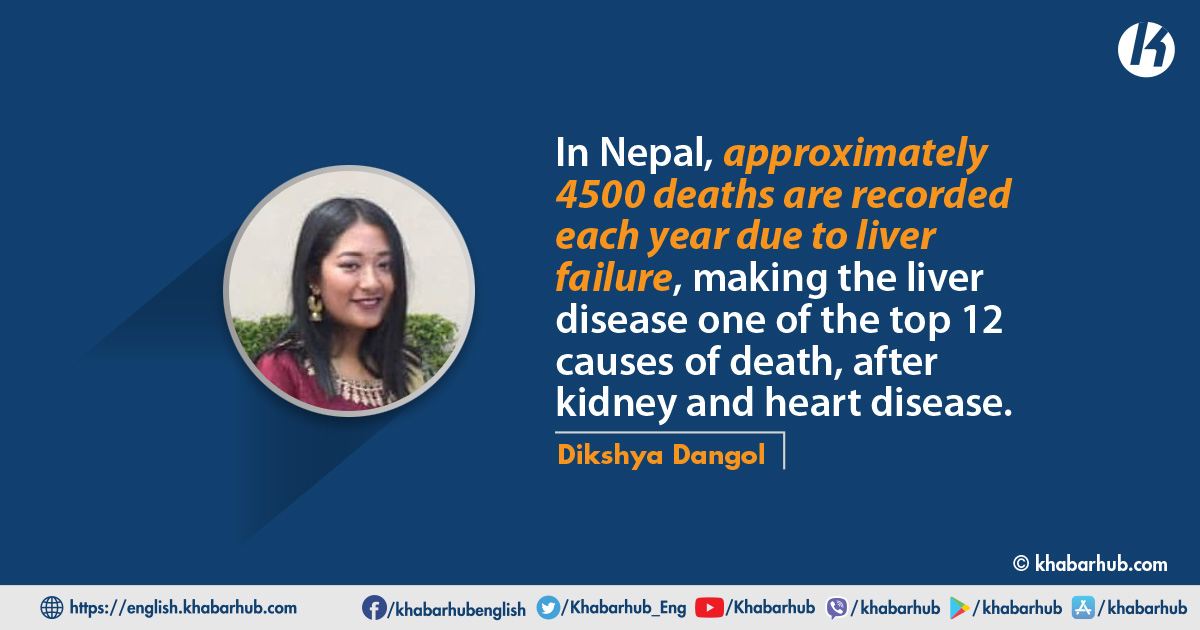The liver, often referred to as the body’s powerhouse is the largest solid gland in the human body. It performs many life-sustaining functions and is the only internal organ capable of regeneration.
As a result, whether a person has end-stage liver disease (ESLD) or liver failure, it can lead to fatal complications, and without a transplant, the person will die.
Each year, liver disease is the 11th leading cause of death worldwide. Liver disease is responsible for an estimated 2 million deaths worldwide, and the number is rising.
According to the World Gastroenterology Organisation, alcohol intake accounts for 50% of all death cases linked to liver cirrhosis and liver cancer worldwide.
According to statistics issued by the Centre for Disease Control and Prevention (CDC), more than 44,000 people aged 20-30 died in 2019 from alcoholic liver disease before receiving a transplant in the United States.
The first case was a liver transplant for an 11-month-old child at TUTH, and the second was the first liver transplant outside of Kathmandu at Chitwan Medical College Hospital, which provided a ray of hope.
Liver Transplantation (LT) has become the standard therapy for many liver diseases. After the first successful Liver Transplant was performed in 1967 in the United States, slowly liver transplantation has been accepted as the definitive treatment for end-stage liver diseases in the rest of the world.
Subsequently, with much effort in the year 2016, the first successful liver transplant in Nepal was performed which has opened a new horizon in the health sector.
In Nepal, approximately 4500 deaths are recorded each year due to liver failure, making liver disease one of the top 12 causes of death, after kidney and heart disease.
According to national statistics, alcohol misuse and infection with the Hepatitis B and C viruses account for about 60% of all liver disorders in Nepal.
Liver transplantation is a life-saving procedure for those with advanced liver cancer, organ donation can be life-saving and life-changing but incidences of organ donations are a rarity in Nepal.
According to an estimate, the number of people dying suddenly from liver disease is increasing at an unprecedented pace.
Even this figure is likely to be low since it is based on the number of chronic liver disease patients who seek treatment in a hospital.
Liver diseases are highly preventable; in 80% of cases, liver disease can be avoided by taking preventive steps such as avoiding daily alcohol intake, receiving universal Hepatitis B vaccination, adopting a healthy lifestyle, managing type 2 diabetes, and preventing Hepatitis virus infections by avoiding unsafe sexual contact, IV drug abuse, contaminated food. In the case of carcinomatous conditions, Liver Transplant can be the curative treatment.
Liver transplantation is a life-saving procedure for those with advanced liver cancer, organ donation can be life-saving and life-changing but incidences of organ donations are a rarity in Nepal.
Thus, most cases of transplantation in Asian Countries, including Nepal, involve live donors.
Donating a liver is a safe procedure. A living donor (close relatives of the recipient) has a 90-95 percent chance of surviving a liver transplant and will return to normal life after three months.
People in Nepal have a misunderstanding about organ donation, especially when it comes to brain-dead organ donation.
The majority of us are unaware of how important our organs are, and how they can save other humans and give them a second chance at life. Donating an organ will turn someone’s deathbed into a cradle of life.
Survival after Post-Transplant (Recipient)
According to liver specialists, in comparison to other organ transplants such as kidney, heart, and lung, liver transplantation has a higher success rate, recipients’ long-term survival, and requires the least amount of medication for long-term follow-up.
The lack of live-linked organ donors and Nepal’s weak healthcare system are two major roadblocks to a successful liver transplant, we may claim.
Adult first transplants have a 1-year survival rate of more than 92 percent, and a 5-year survival rate of 85 percent. There are testimonies of people who have lived for more than 20 years and are still alive today because of good treatment and nutrition.
Despite the fact that Nepal’s organ transplant act was enacted in 2016, only 13 liver transplants have been successful.
The majority of people who want this operation will most likely travel to India for the surgery, which costs about 60 lakhs excluding living expenses. The same procedure can be performed here for about 25 lakhs.
This is due to the fact that liver transplantation in Nepal is still in its infancy. The biggest challenge that health care planners face when it comes to liver transplantation is prioritizing adequate care.
The state of health care in Nepal is appalling; those centers in Nepal where transplants are usually performed were put on hold due to a lack of technical equipment, especially during the outbreak, which resulted in life-saving procedures being halted.
It should be noted that three Nepali citizens traveled to India for liver transplants within the first two months of the lockdown in 2020, despite the risky period of the global pandemic.
The reason for this was the shortage of necessary surgical equipment in Nepal. Patients were obliged to pay an excess of over 1.5 crores to seek assistance across the border in order to save their lives.
A significant amount of money could be saved if the health facility for Kidney and Liver Transplant made progress, allowing access to quality treatment for the hundreds of Nepalese who travel to India for transplant.
However, following the Covid-19 comprehensive evaluation of ICU after the first wave of the pandemic, Nepal has successfully performed two major liver transplants.
The first case was a liver transplant for an 11-month-old child at TUTH, and the second was the first liver transplant outside of Kathmandu at Chitwan Medical College Hospital, which provided a ray of hope.
The lack of live-linked organ donors and Nepal’s weak healthcare system are two major roadblocks to a successful liver transplant, we may claim.
With the recent success and improvement in Nepal’s human organ transplant center, it’s clear that healthcare is receiving a good amount of attention.
People with chronic liver disease are likely to be able to get the treatment they need now, so they won’t have to forego the peace of mind that comes with understanding that something as important as a transplant can be performed in their own country at a lower cost.
Still, much more needs to be done in Nepal’s health sector, particularly in terms of fully developing health infrastructure.
Organ transplantation is now common in the majority of countries. Perhaps countries like India have done it on a wide scale with a high rate of success.
Hence, the government must invest in both health infrastructure and health professionals.
The lack of live-linked organ donors and Nepal’s weak healthcare system are two major roadblocks to a successful liver transplant, we may claim.
Similarly, the Nepali government has given financial assistance to patients suffering from various chronic diseases and cancers, but not to patients suffering from liver disease.
The government must consider this reality and assist liver patients financially.









Comment